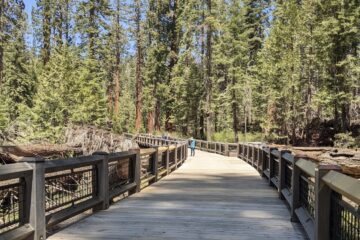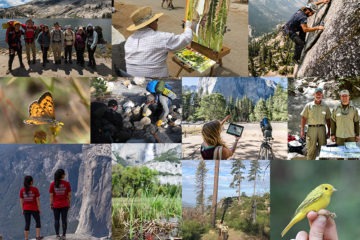A version of this story appeared in the November 2016 issue of our donor magazine, Yosemite Conservancy, which features in-depth stories, Q-and-A’s with park experts, project updates, and more. Join our donor community to get the next issue in your mailbox!
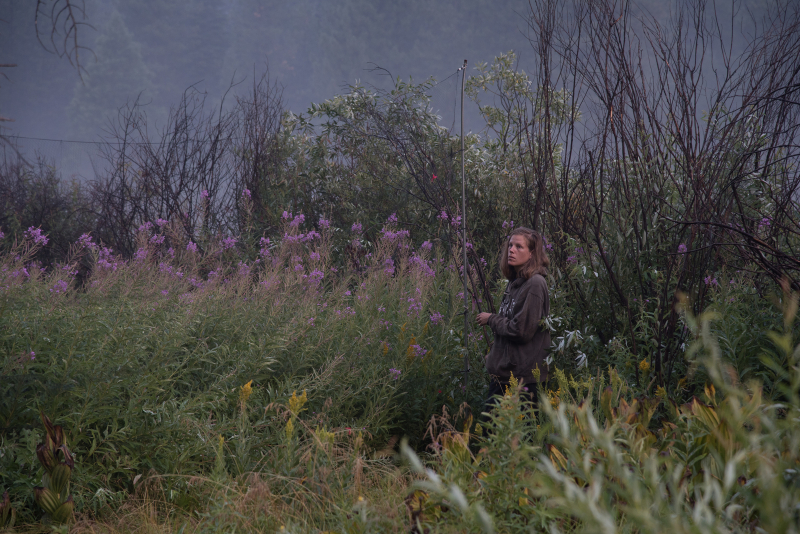 A day on Yosemite’s bird crew often starts before dawn, with a headlamp-lit hike to a dewy meadow. Early morning music crescendos as the sun rises, a mix of songs and trills punctuated by quail calls. The crew stretches a series of soft nylon between tall poles, to catch their study subjects midflight.
A day on Yosemite’s bird crew often starts before dawn, with a headlamp-lit hike to a dewy meadow. Early morning music crescendos as the sun rises, a mix of songs and trills punctuated by quail calls. The crew stretches a series of soft nylon between tall poles, to catch their study subjects midflight.
The scientists and interns who spend summers studying the park’s avian species are the keepers of a noteworthy legacy: Yosemite launched its first bird-banding stations in 1990, as part of the then-fledgling North American MAPS (Monitoring Avian Productivity and Survivorship) Program.
Today, Yosemite’s six stations, among the oldest in the country, are responsible for the most extensive songbird data set in the national park system.
Our donors have played an important role in building that scientific legacy, providing vital support to the park’s songbird research program for two decades. That funding has allowed the team to study rare species, record some of North America’s oldest birds, document the importance of wildfires and meadow hydrology, and much more.
Yosemite provides a natural laboratory for understanding population shifts among diverse migratory and resident birds, and how human development, weather events, climate change and other factors affect different species. Working in that laboratory requires long hours, specialized tools, and gentle hands. And it all starts with the nets.
Between 6 a.m. and noon, the bird crew operates on a continuous cycle: Check the nets. If there’s a bird, gently remove it. At the banding table, record the species, and then, using tiny pliers, carefully place a small aluminum band with a 9-digit identification number around the bird’s leg. Determine the bird’s age, sex and weight, and let it wing off with its shiny new bracelet. Then, back to the nets.
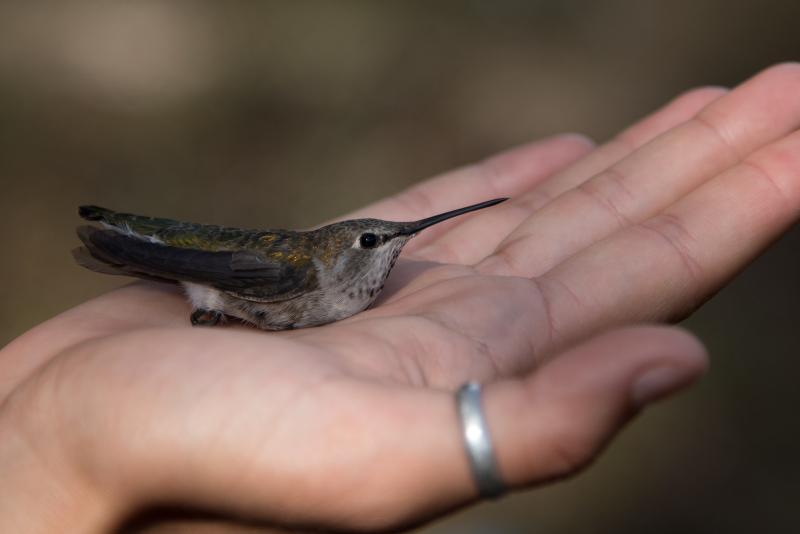 Banding protocols ensure that birds are studied and released as safely and quickly as possible. The swift but careful capture-band-record-release cycles add up: In 2016, the bird crew collected data on more than 2,000 individual birds.
Banding protocols ensure that birds are studied and released as safely and quickly as possible. The swift but careful capture-band-record-release cycles add up: In 2016, the bird crew collected data on more than 2,000 individual birds.
In one recent case, data from Yosemite is providing a unique glimpse at a bird’s life outside the park — and at a potential future challenge.
In June 2014, Yosemite’s bird crew captured nine black-headed grosbeaks in Hodgdon Meadow. The migratory birds flew off with more high-tech apparel than most: Tiny backpacks equipped with archival GPS devices, so-called because they “archive” data, rather than transmitting it.
To study the data, therefore, you have to retrieve the bird and its backpack.
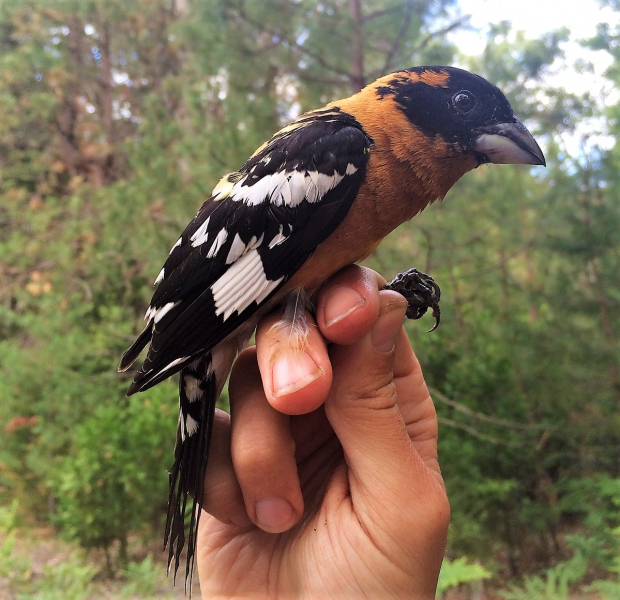 Fortunately, black-headed grosbeaks, which summer in Yosemite but head south during the winter, are philopatric: They tend to return to the same places each year. In June 2015, the bird crew found one of the GPS-backpack-wearing grosbeaks back in a net at Hodgdon Meadow.
Fortunately, black-headed grosbeaks, which summer in Yosemite but head south during the winter, are philopatric: They tend to return to the same places each year. In June 2015, the bird crew found one of the GPS-backpack-wearing grosbeaks back in a net at Hodgdon Meadow.
The retrieved GPS device allowed scientists to map the grosbeak’s journey. After leaving Yosemite, it had paused in Sonora, Mexico for several weeks, then gone further south to its winter grounds. That route points to a “molt-migration” pattern: The grosbeak arrived in Sonora when ample food was available, and paused there to shed its feathers before continuing on. When the bird crew recaptured a second backpack-bearing bird in June 2016, they found an identical GPS-archived path.
Confirming that the black-headed grosbeak is a molt-migrant not only adds to scientists’ understanding of the species, but also opens the door to a discussion about its future. Climate change could lead to a mismatch between the grosbeak’s migration schedule and food availability at its various stopping points.
The grosbeak’s story underscores why Yosemite’s bird-banding research matters well beyond park borders. Unlike bears or bighorns, birds often travel across state and national lines. Their journeys and demographics provide important clues to environmental changes in Yosemite, in the Sierra, and across the West.
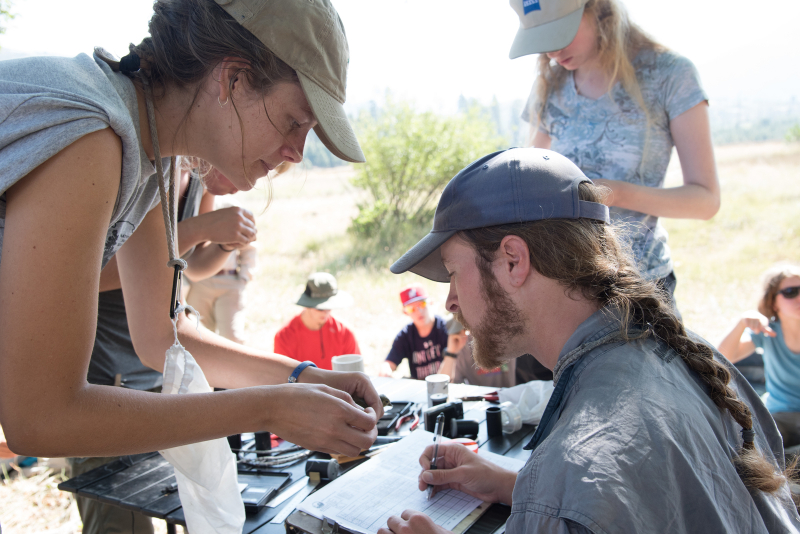 Sharing that information and inspiring more people to learn about songbird science is a key component of Yosemite’s long-running program. Conservancy-supported Student Conservancy Association interns hone specialized skills as they work alongside expert ornithologists. The team has published numerous papers, and leads bird-banding demonstrations for school groups and Conservancy Outdoor Adventure participants.
Sharing that information and inspiring more people to learn about songbird science is a key component of Yosemite’s long-running program. Conservancy-supported Student Conservancy Association interns hone specialized skills as they work alongside expert ornithologists. The team has published numerous papers, and leads bird-banding demonstrations for school groups and Conservancy Outdoor Adventure participants.
Like our own species, birds find sanctuary in Yosemite’s pristine landscape, and return generation after generation. Preserving the park helps protect birds; in turn, studying birds helps shape efforts to preserve the park. Thanks to your support, scientists are expanding a rich data set and helping to ensure that Yosemite continues to serve as haven, where birds and habitats are protected for generations to come.
Above: Songbird science in action! A bird takes flight from one of Yosemite’s songbird research stations, with a tiny aluminum identification band affixed to its leg. Photo: Laurel Houston

